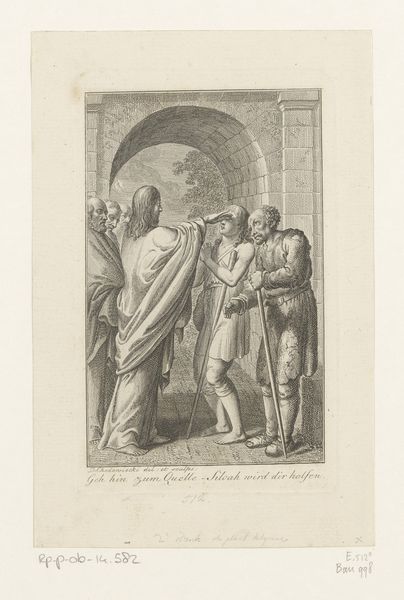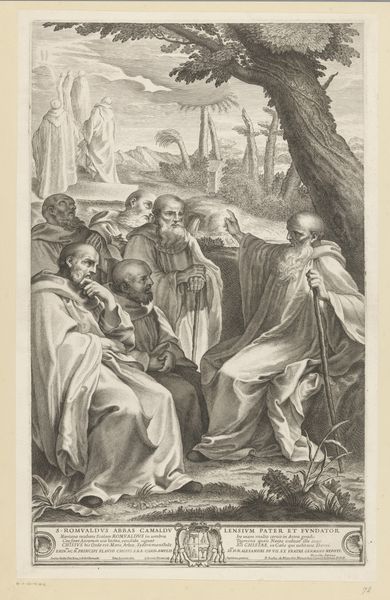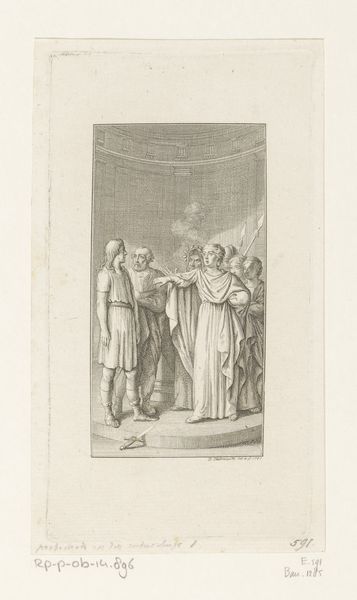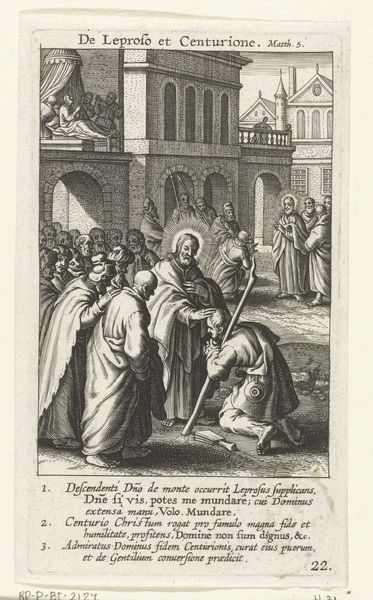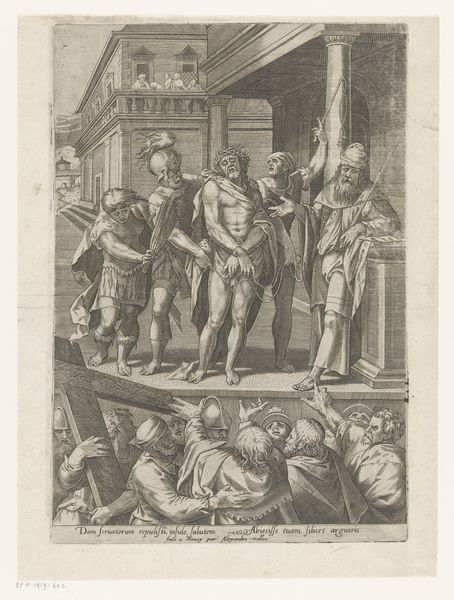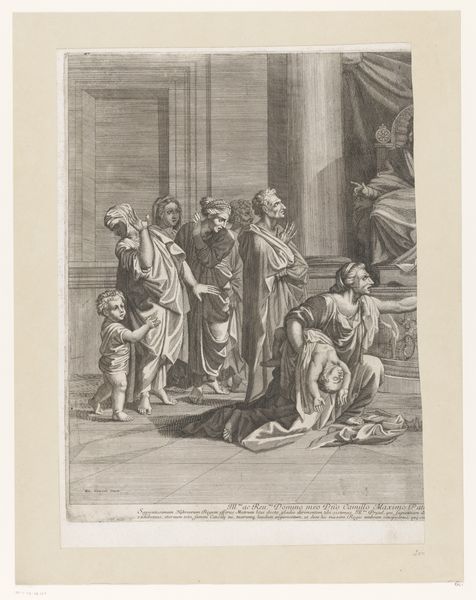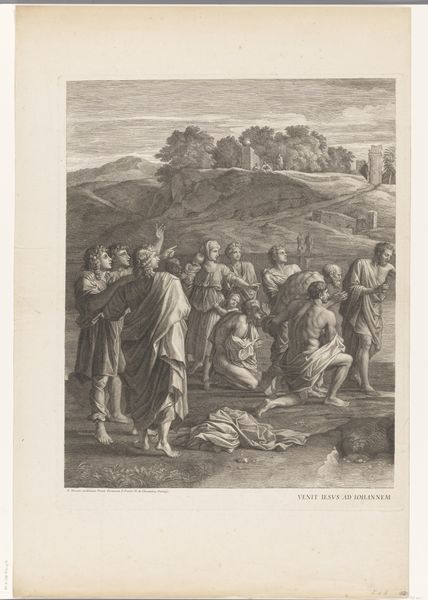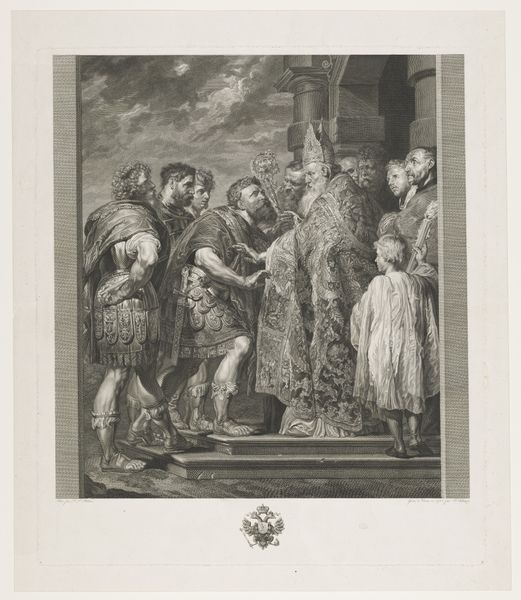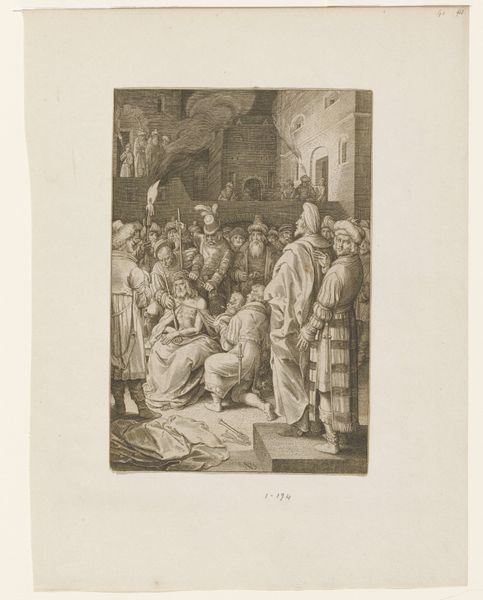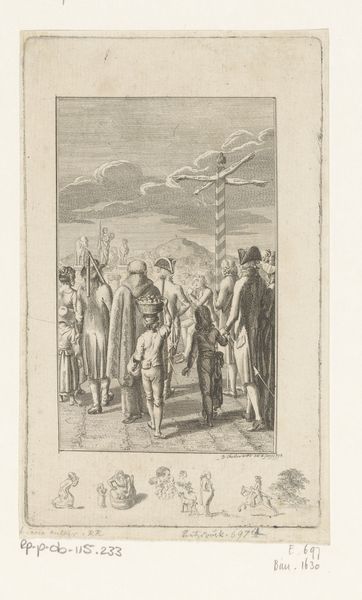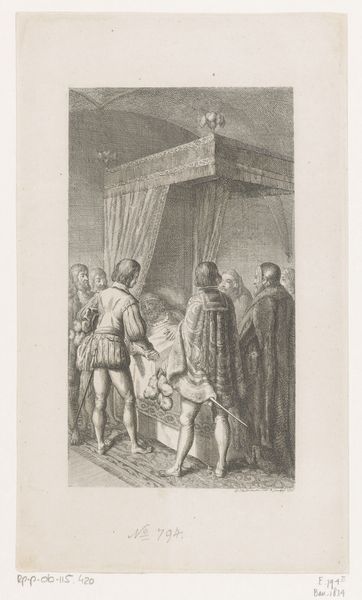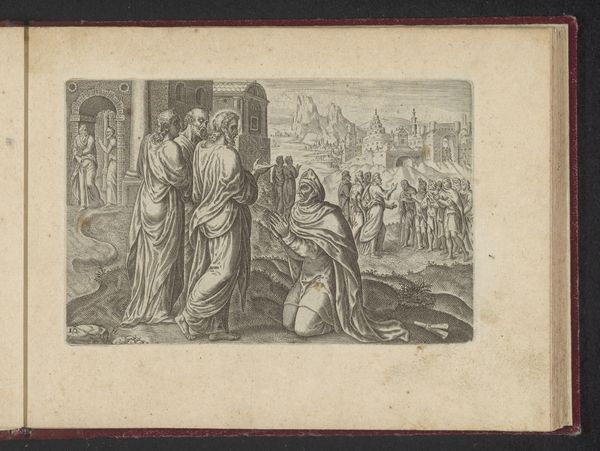
drawing, print, pencil, engraving
#
portrait
#
pencil drawn
#
drawing
#
neoclacissism
# print
#
pencil sketch
#
figuration
#
pencil drawing
#
pencil
#
line
#
history-painting
#
engraving
Dimensions: height 172 mm, width 108 mm
Copyright: Rijks Museum: Open Domain
Curator: The stark lines and calculated composition create a palpable tension, don’t you think? Editor: Yes, a real sense of dread pervades. What exactly are we looking at? Curator: This is “Christus en Barabbas voor Pontius Pilatus,” a print created around 1785 by Daniel Nikolaus Chodowiecki. It currently resides at the Rijksmuseum. Editor: The raising of hands. The manacles of the prisoner to the left, positioned next to a serene Christ. This imagery is striking—a direct visual reference to themes of unjust accusation, freedom versus captivity... It really evokes the drama of the Passion. Curator: Notice how Chodowiecki uses the contrast between light and shadow to emphasize the central figures? The lines are incredibly precise. Also consider how he arranges the figures in a shallow space, almost like a stage. It directs our eye right where he wants it. Editor: Indeed. The architecture looms in the background but never overwhelms the foreground figures. Each person here—Pilate, Christ, Barabbas—has a set role and contributes to a shared, loaded moment. Even those obscured at the back feel like essential participants. Are there some connections with theatre happening here? Curator: Undeniably, the theatrical composition underscores the inherent drama of the narrative, the formal structure mirroring the moral weight of the situation. You mentioned theatre, consider also that staging, the carefully placed lines contribute to the overall legibility and didactic clarity, reflecting neoclassicist principles prevalent at the time. Editor: Looking closely, Barabbas appears a darker complexion and disposition than Christ. I see the representation of deeply ingrained cultural prejudices about morality and culpability, that have stayed potent across centuries. The body language in itself telegraphs entire belief systems! Curator: Well, whether one agrees with those systems or not, the genius lies in Chodowiecki's understanding and manipulation of these forms. It’s not simply representation but rather an orchestration of signs, of legible and compelling symbols. Editor: In essence, the piece encapsulates a complex interplay between judgment and deliverance, using stark, unforgettable iconography to depict profound moral reckoning. A symbolic study in choice, wouldn't you say? Curator: Precisely. It reminds us that sometimes form and symbol align to offer more questions than answers.
Comments
No comments
Be the first to comment and join the conversation on the ultimate creative platform.
